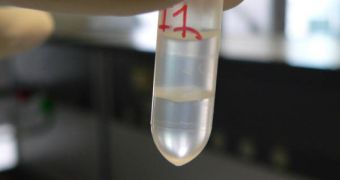Bioengineers at the Duke University have recently managed to achieve a groundbreaking objective, when they have created a special method that allows for the addition of protective polymer molecules to protein drugs. The new “armor” allows for the drugs to operate at an increased efficiency inside the body, while remaining protected from outside agents. Details of the method appear in this week's issue of the journal Proceedings of the National Academy of Sciences (PNAS), e! Science News informs.
In their experiments, which were conducted on unsuspecting mice, the researchers observed that the polymer-protein constructs, which they termed conjugates, remained in the bloodstream for longer than any of the unprotected proteins. In charge of the new research was the DU School of Engineering Theo Pilkington Professor of Biomedical Engineering Ashutosh Chilkoti. The expert argues that similar studies are required in larger numbers, as protein drugs are becoming an increasingly common component of doctors' treatment options.
The main problem with proteins that are inserted directly into the body is the fact that they are quickly recognized by the immune system and broken down into their components, or are destroyed and eliminated. This, of course, limits their efficiency in combating the disease that they were injected to cure. Now, with the addition of the polyethyleneglycol (PEG) polymer, they are able to better withstand these attacks. Still, this method has disadvantages as well, the team admits.
“The current method of combining the two molecules often only works with 10 to 20 percent efficiency, so that a lot of the very expensive starting materials are wasted. Additionally, the two large molecules are attached by a small chemical link and often these linkages can occur at many different sites on the protein, so the final product is poorly defined,” Chilkoti explains. However, the team has managed to maneuver past this obstacle.
“We also addressed the problem of getting a pure and well-defined product by growing the polymer from a single, unique site on the protein. Another twist to our work is that instead of using PEG, we used a somewhat different polymer that turns out to be as good and perhaps even better than PEG in extending circulation of the protein in the body,” the team leader says. The experts determined that myoglobin, the protein that gives meet its red color, was the most suited carrier for the polymers.

 14 DAY TRIAL //
14 DAY TRIAL //